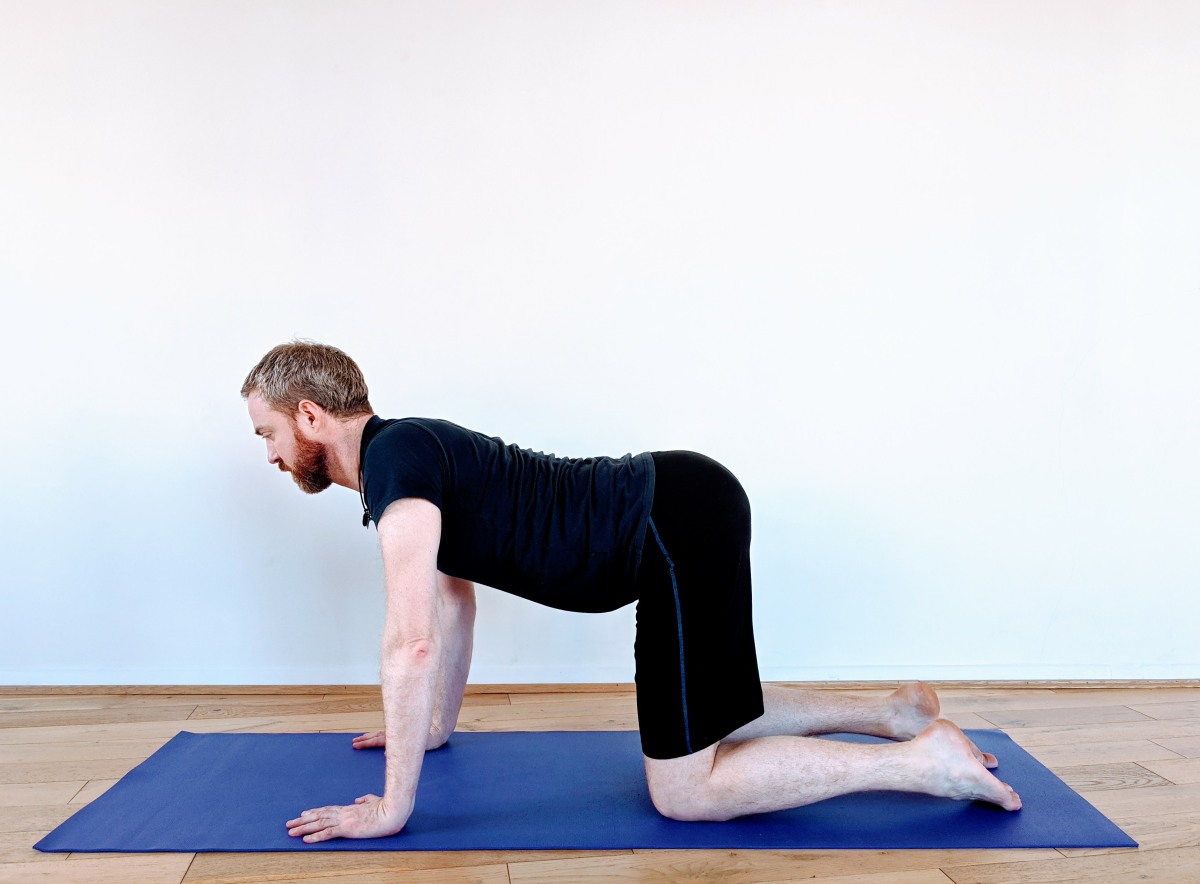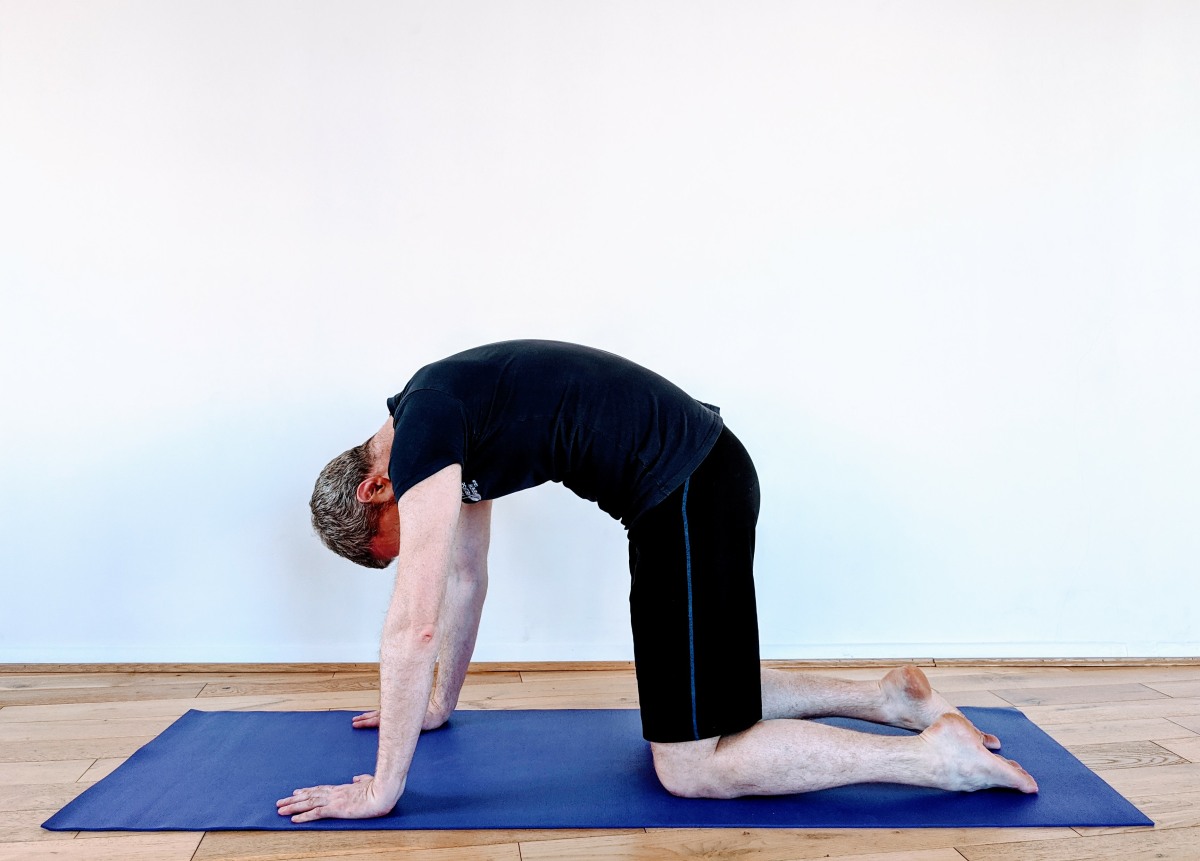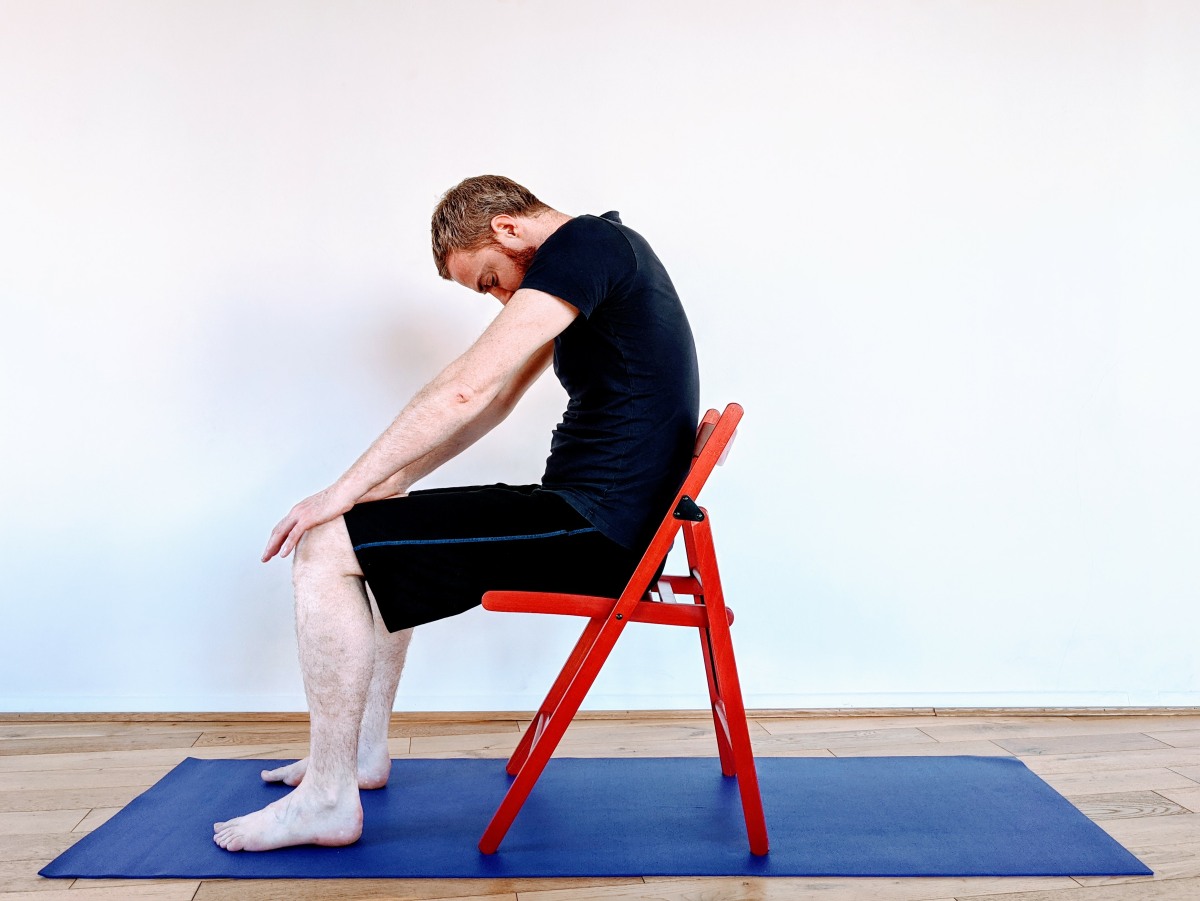The cat stretches are a classic for spinal movement and mobility. The are also often called the Cat/Cow movements, although to be honest I can never remember which is which, so I tend to just call them the Cat stretches, with dipped cat and arched cat if I have to name the different bits.
The main thing to consider is that you are trying to move the whole spine into a continuous curve, and not crunching in one or two areas of the spine. These areas tend to be the base of the skull or the low back, as these tend to be the places we move most. The area we particularly ignore is the thoracic spine, which is the longest section that supports the ribcage, and especially the bit between the shoulder blades.
Equipment
None really necessary, but something soft under the knees is nicer than a wooden floor (folded towel or yoga mat).
Stretch 1: Dipped cat.
Steps
- Start on all fours: hands under shoulders and knees under hips.
- Spine should feel supported by the shoulder blades (i.e. not hanging from them or over working and being pushed up to much.) and this is neutral.
- Lift your gaze, so the head feels like it emerges and the breast bone is sliding forwards and up.
- At the same time the pelvis tilts so that the sitting bones and tail bone point up towards the ceiling.
Things to think about
- You are trying to make a csmooth continuous curve of spine from the base of the skull to the tailbone, like a very smooth bowl.
- Looking up involves the whole head so you don’t scrunch up the base of the skull/top of the neck.
- You’re not over arching the low back.


Stretch 2: Arched cat
- Return to the neutral spine with hands under shoulders, knees under hips.
- This time the gaze travels under the body and between your feet, imagine your trying to see as far up the wall behind you. The head can hang down once you’re at the extreme.
- At the same time the pelvic tucks under, with the sitting bones pointing more towards the floor.
- The spine should be arching up towards the ceiling.
Things to think about
- You are trying to make a csmooth continuous curve of spine from the base of the skull to the tailbone, like a very smooth dome or arch.
- The head can hang when at the final arch.


Complete exercise
It is unusual to only complete these stretches in isolation, and it is more typical to move between the two a number of times.
These movements are often considered simple, but they do get the whole spine moving. They should not create new pain, increase existing pain levels or discomfort. If they do then please stop doing the exercise and get advice on what is happening in your body.
Video
Here’s a short video of me going through the traditional cat movements. There is a seated version further down.
Alternative: Seated Cat Stretch.
If you can’t get down to the ground, then the cat streches can be modified to be done in a chair:
- Sit towards the front of the chair.
- Place hands on knees
- Roll onto the front of your sitting bones.
- Lift your gaze and breast bone to go towards a back arch.
- Hold for a couple of breaths
- Roll onto the back of your sit bones, so the pelvis rolls backwards
- Let the head drop forwards.
- Use your arms to help to arch the spine between the shoulder blades.
- Hold for a couple of breaths.
- Repeat as necessary.



These movements can be done as a static stretch, holding the extreme position for about 30 seconds, or it can be more of an active constant movement going between the two extremems. Why do I say to hold the static stretch for 30 seconds? I put it like this: the first 10 seconds it feels like the muscles are shocked into wondering what this position is. Then the next 10 seconds they start to relax into the position, and the final 10 seconds they might also be able to move a bit deeper into the movement, and accept that this is possible.
These movements should not cause additional pain or discomfort, or cause new pain. If they do then please stop and get some advice on what is happening to your body.
Thanks for reading this my lovely Interonauts.
Tim


